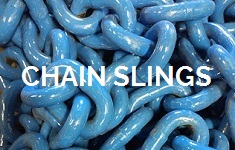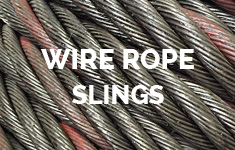What is a Rope Drive? – Regulations, Dimensions, Working Cycles, & More
Rope drives in cranes, rope ways, elevators, and mining installations have technical regulations. For safety reason, specified tensile force should not be exceeded. There is also a given rope diameter, and diameter ratio D/d. The five limits are calculated using a general dimensioning method. These five limits include:
- Working cycles up to breakage or rope discarding (mean or 10% limit).
- Donandt force – This is the yielding tensile force for a particular bending diameter ratio D/d. Donandt force SD1 must be greater than the nominal rope tensile force S.
- Rope safety factor – This is the ability of the rope to resist extreme impact forces. It is calculated by the ratio of minimum breaking force Fmin to nominal rope tensile force S. For simple lifting appliance, Fmin/S ≥ 2,5.
- Discarding number of wire breaks – This is used to detect if there will be any need for rope replacement. A rope should have BA30 ≥ 8 for lifting appliance.
- Optimal diameter of rope with the max. rope endurance – It is advisable that the rope diameter is equal to or less than optimal rope diameter.
Calculation of Rope Drive Limits
The rope drive limits calculation is dependent on the following:
- Data of used wire rope
- Diameter D of sheave and/or drum
- Rope bending length l
- Rope tensile force S
- Reverse bendings per working cycle w-rev
- Simple bendings per working cycle w-sim
- Relative fluctuating tensile force delta S/S
- Combined fluctuating tension and bending per working cycle w-com
Safety
Wire ropes can become stressed by fluctuating forces, wear, corrosion, and extreme forces. They come with finite rope life. In order to maintain safety, it is important that the ropes are inspected regularly to detect wire breaks and other failures. Thus, the rope can be replaced before causing accidents. Installations should also be done in such a way that inspecting the wire ropes can be carried out easily.
Terminations
Wire rope ends often fray readily. You cannot connect then to plant and equipment. However, you can still secure a wire rope to prevent it from fraying. This can be achieved by turning the end back to form a loop. You can then fix the loose end back to the wire rope. Efficiency of termination vary between 700% to %100
Thimbles
After terminating a rope with a loop, it can bend too tightly. You can install a thimble inside the loop. This will help preserve the loop’s original shape. It will also protect the cable from abrading and pinching Thimbles also help prevents the load from touching the wire directly.
Wire rope clamps/clips
Wire rope clamps also referred to as clips are used for fixing the loop’s loose ends back to the wire rope. It features a forged saddle, a U-shaped bolt, and two nuts. Fit the saddle over the rope, and place the two layers in the U-bolt. The nuts will help hold everything in place. You can terminate a wire using at least three clamps. When installing a clamp, be sure that the clamp’s saddle portion is placed on the load-bearing side. You can place the flat bearing seat against the live end. However, do not use clips as permanent terminations.
Eye splice or Flemish eye
Eye splice is used to terminate wire rope’s loose end in the process of forming a loop. Unwound the wire strands to a particular distance, then plant them back into the wire. It will form the shape of a loop or eye. It can then be used on the wire rope.
Swaged Terminations
Swaging is a wire rope termination method. It refers to the installation technique. The swaging wire rope fittings can be used in connecting two wire rope ends together. A hydraulic or mechanical swaging wire can be used to compress and deform the fitting. Thus, creating a permanent connection. Various types of swaged fittings include Ferrules, Threaded Studs, Sockets, Sleeves, and so forth. Do not swag ropes with a fiber wire.
Wedge Sockets
Wedge socket terminations are suitable if there will be any need for you to replace the wire ropes frequently. If the wire rope end is in a high-wear region, you can trim the rope periodically. Termination hardware can then be removed and reapplied.
Potted ends or poured sockets
Poured sockets are usually used in making a high strength, permanent terminations. You can create a poured socket by inserting a wire rope into a conical cavity’s narrow end. Ensure that the orientation is in line with the anticipated strain direction. You can slay the individual wires inside the cone before filling the cone with molten zinc, or an unsaturated polyester resin compound.









